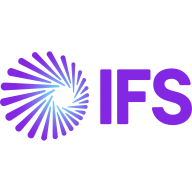

Teradata and IFS Cloud Platform compete in the data warehousing and ERP categories, respectively. Teradata holds an advantage in processing speed and adaptability, while IFS Cloud offers stronger customization and integration capabilities.
Features: Teradata is known for its Massively Parallel Processing (MPP) architecture, enabling rapid processing of large data volumes. It supports seamless transitions from BI to ODS and offers features like query optimization and workload management. IFS Cloud Platform provides robust integration options with industry-specific workflows and open architecture, allowing significant customization and easy integration with other systems.
Room for Improvement: Teradata could improve on pricing, scalability, concurrency, and handling of unstructured data. It would benefit from more user-friendly interfaces and enhanced cloud services integration. IFS Cloud Platform needs improvements in CRM functionality and workflow design, and it could better handle high-volume transactions and offer enhanced reporting. Both could focus on improving ease of use and reducing deployment times.
Ease of Deployment and Customer Service: Teradata offers multiple deployment options, including on-premises and cloud, with strong technical support, though response times can vary. IFS Cloud supports hybrid deployments but is noted for its complexity and time-consuming setup. It generally receives positive feedback in customer service, although there's room for improvement in response speed and consistency.
Pricing and ROI: Teradata is considered high-cost, reflecting its position in data warehousing, with negotiation critical for licensing terms. IFS Cloud's competitive pricing is generally more suited for larger enterprises, offering scalability and flexibility through user-based models. Both solutions are recognized for delivering solid ROI by boosting customer satisfaction and operational efficiency.
The technical support from Teradata is quite advanced.
Customer support is very good, rated eight out of ten under our essential agreement.
This expansion can occur without incurring downtime or taking systems offline.
Scalability is complex as you need to purchase a license and coordinate with Teradata for additional disk space and CPU.
I find the stability to be almost a ten out of ten.
The workload management and software maturity provide a reliable system.
There is not much available online, and the documentation availability is on the lower side compared to other products, especially Maximo.
Unlike SQL and Oracle, which have in-built replication capabilities, we don't have similar functionality with Teradata.
Initially, it may seem expensive compared to similar cloud databases, however, it offers significant value in performance, stability, and overall output once in use.
Teradata is much more expensive than SQL, which is well-performed and cheaper.
There are fewer fields on the user screen compared to other products.
The data mover is valuable over the last two years as it allows us to achieve data replication to our disaster recovery systems.


IFS is the world’s leading provider of Industrial AI and enterprise software for hardcore businesses that make, service, and power our planet. Our technology enables businesses which manufacture goods, maintain complex assets, and manage service-focused operations to unlock the transformative power of Industrial AI™ to enhance productivity, efficiency, and sustainability. Industrial AI is IFS.ai.
IFS Cloud is a fully composable AI-powered platform, designed for ultimate flexibility and adaptability to our customers’ specific requirements and business evolution. It spans the needs of Enterprise Resource Planning (ERP), Enterprise Asset Management (EAM), Supply Chain Management (SCM), Information Technology Service Management (ITSM), and Field Service Management (FSM). IFS technology leverages AI, machine learning, real-time data and analytics to empower our customers to make informed strategic decisions and excel at their Moment of Service™.
Teradata is a scalable data analytics platform designed to meet enterprise demands for large-scale data management and processing, focusing on performance, scalability, and security for complex query executions.
As a leading data warehousing solution, Teradata integrates advanced analytics enabling organizations to derive insights from massive datasets. It supports high-volume data workloads with its architecture optimized for analytical queries. Users benefit from its robust scalability, allowing seamless expansion as data grows. Teradata's SQL engine is compatible with a wide range of data types, ensuring flexibility in data analysis. With advanced security measures, it protects sensitive data across various environments, providing peace of mind to users handling critical information.
What are the most important features of Teradata?Teradata is widely used in industries like finance, telecommunications, and healthcare, where data-driven decisions are critical. Companies leverage its robust analytics capabilities to enhance customer experiences, streamline operations, and ensure compliance with regulatory requirements. In these sectors, quick access to data insights can significantly impact competitive advantage.
We monitor all Customer Experience Management reviews to prevent fraudulent reviews and keep review quality high. We do not post reviews by company employees or direct competitors. We validate each review for authenticity via cross-reference with LinkedIn, and personal follow-up with the reviewer when necessary.